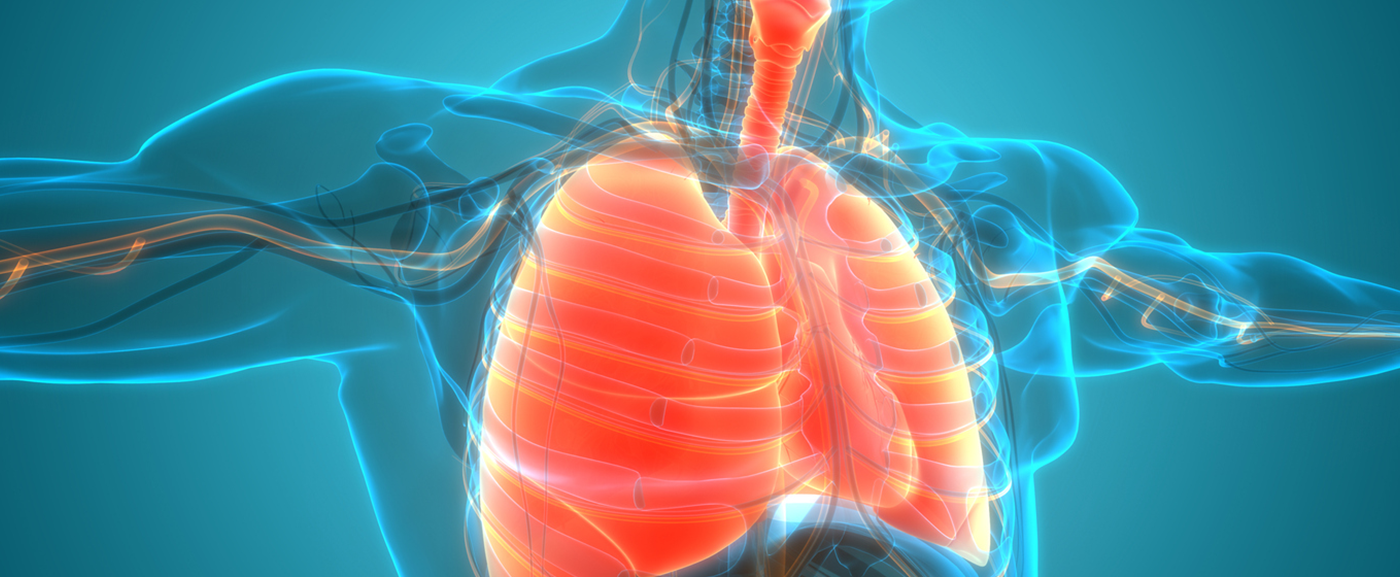Researchers from Fraunhofer ITEM, Hannover Medical School and FAU Erlangen-Nuremberg have discovered a new regulatory pathway that plays a crucial role in the pathogenesis of idiopathic pulmonary fibrosis (IPF). The RNA-binding protein Quaking and its functional interplay with microRNAs are the focus of attention. In silico and in vitro analyses revealed a novel regulatory axis of micro-RNA-506 and quaking contributing to the pathogenesis of IPF. The study was published in Nature Scientific Reports. These findings open up new therapeutic options for IPF, for example with RNA therapeutics or “small molecules”.
In idiopathic pulmonary fibrosis, a connective tissue-like remodeling of the lung tissue usually occurs without an identifiable cause due to a chronic inflammatory reaction. Patients increasingly suffer from shortness of breath, which initially occurs only under exertion, later also at rest. It is a disease with poor survival prognosis and limited therapeutic options. With the goal of developing new, improved therapeutic strategies for the treatment of IPF and other fibrotic indications, the research team led by Prof. Thomas Thum, head of Fraunhofer ITEM and head of the Institute for Molecular and Translational Therapeutic Strategies at MHH, is searching for novel mechanisms and molecular targets.
Targeting RNA-binding proteins
RNA-binding proteins have been particularly targeted by researchers because, after binding to various cellular RNAs, these proteins carry out a variety of molecular processes, including RNA splicing, processing, localization, and translation. It is known that RNA-binding proteins have a regulatory function in cardiac fibrosis, where they contribute significantly to fibroblast activation and tissue scarring. Of particular interest here is the RNA-binding protein Quaking (QKI). The researchers found that QKI is significantly less expressed in IPF patients than in healthy individuals. QKI may be a target for therapy in IPF-therapeutic restoration of QKI protein expression may be relevant for this purpose. In their work, the research team demonstrated that QKI is regulated by microRNA-506 (miRNA-506). “In our cardiovascular research, we have been focusing on microRNAs for 15 years, where they act as regulators of quaking protein expression. We can now transfer this finding to the lungs: we were able to identify microRNA-506 as a regulator of quaking,” says Prof. Thum.
miRNAs identified as regulators of QKI proteins.
Endogenous miRNAs are short, highly conserved, non-coding RNAs that play an important role in the complex network of gene regulation. They highly specifically regulate gene expression at the post-transcriptional level – inhibiting protein expression by binding to specific target mRNA in the 3′ untranslated region. For IPF therapy, inhibition of relevant miRNAs regulating QKI expression could be an elegant strategy to restore the loss of QKI protein expression. Prof. Thum and his team are currently investigating miRNA inhibitors for the treatment of heart disease in late preclinical or clinical development and plan here to extend promising candidates to pulmonary fibrosis indications.
Combination of in silico and in vitro analyses identifies novel IPF regulators.
To explore the possibility of therapeutic application of miRNAs to restore QKI expression in IPF, the investigators, in collaboration with Dr. Meik Kunz from FAU Erlangen-Nuremberg, applied a practical in silico screening approach using data information from multiple sources and integrative molecular network bioinformatics. The generated network served as a basis to search in silico for miRNAs and drug candidates that have the potential to act as molecular off-switches for the QKI interactome. Using in vitro experiments, including human lung fibroblasts that model QKI interactions, the researchers confirmed the accuracy of the computational predictions. In cooperation with Prof. Danny Jonigk of the Institute of Pathology of the MHH, the findings of QKI repression in fibrotic human lung material were confirmed. The goal is now to use the findings to develop new therapeutic approaches based on RNA therapeutics or small molecules. For this purpose, the precision sections from human lung tissue, which have long been used by scientists at Fraunhofer ITEM for preclinical studies, will also be used.
Source:











